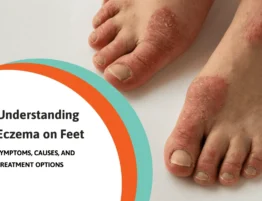

A common foot complaint you ask? How about heel pain? Most commonly felt on the bottom of your heel bone, it can be pain experienced when you first get up in the morning. For most, this is how it starts. However, after a few minutes, the pain subsides. You think to yourself, “This must be nothing” and move on with your day, but I am telling you now, you don’t have to live with this!
Many patients we see often ask the question, “Do I have a heel spur? Should I seek bone heel spur treatment” The idea that a heel spur is causing your pain, is an old concept that doesn’t seem to go away. It’s actually the plantar fascia causing your pain, and we will explain how and why it’s not a boney issue.
What Is a Heel Spur?
The plantar fascia is tight connective tissue that extends from the ball of the foot, to the bottom of the heel bone. With every step that is taken, your body weight comes down on the foot and your arch flattens causing the fascia to be pulled. Children and young adults are less likely to have pain from the fascia, as their fascia is more flexible, much like a rubber band. When they bear weight, the fascia will stretch and not pull from the heel bone where it attaches. As we get older, the frequency of heel pain is thought to increase because the fascia becomes less flexible as it pulls from the heel. Microtears of fascia may occur at its attachment point on the heel bone. It is thought that a heel spur is the result of the fascia pulling from the heel bone. This may result in more bone formation at its insertion point, resulting in the spur, but the actual spur is not painful.
Why Is It Not The Bone Heel Spur?
1. Surgical Treatment
When surgery is performed the spur is not removed, and patients typically get much better. Starting in the 1990’s, Dr. Steve Barrett was the first doctor to train other physicians on using a minimal incision approach to releasing and cutting the fascia so that it may stretch and elongate. This reduces the pull of the fascia from the heel and is highly successful for pain relief. When the surgery is performed, a scope is placed along the bottom of the heel and if a spur is present it is not removed. Because of the effectiveness of the procedure, it proves the spur does not cause pain. (Barrett SL, Day SV. Endoscopic plantar fasciotomy for chronic plantar fasciitis/heel spur syndrome: surgical technique—early clinical results. J Foot Surg. 1991;30:568-70.) https://www.ncbi.nlm.nih.gov/pmc/articles/PMC3117526/
2. Diagnostic Ultrasound Evaluation
When patients are consulted for their heel pain, we evaluate the heel with an ultrasound machine. Studies have shown what the normal appearance of the fascia should be based upon its thickness and coloration. The thicker and darker the fascia appears, the more damaged it is. The appearance is highly correlated with the amount of pain the patient has – whether or not a spur is present.
3. Regenerative Medicine Treatment
For well over a decade, we have been using PRP platelet enriched plasma, and in recent years, umbilical or placental cells to repair the fascia. Using ultrasound guidance, we are able to very accurately inject directly into the fascia. Again, we are not treating the spur and patients have a high success rate.
Causes of Plantar Fasciitis
- Overuse: simply doing too much too soon can be a cause. It’s important with any walking or running to start out slow and allow rest days in the beginning to allow your body to heal.
- Foot Type: Some foot types may be more prone to the fascia pulling from the heel. More support may be part of the solution by using supportive shoes, or over the counter arch supports.
- Lack of Flexibility: If the fascia is tight or the calf muscles are tight, this can also play a role. Daily stretching of the calf muscles and fascia may help.
- Trauma: Jumping down on the foot may also cause heel pain. When this occurs, the fascia may partially or fully rupture from the heel bone.
In Home Treatments
- Stretching: This can be done to help reduce tightness of the calf muscle and the fascia.
- Anti Inflammatories: In the early stages of heel pain, these may also be helpful.
- Icing: Icing may help, especially if used after an activity.
- Support: When fitting into a shoe, more supportive shoes and using over the counter arch supports are helpful.
Treatments That Your Podiatrist Would Offer
- Physical Therapy: This may come in the form of using an ultrasound.
- Orthotics: Orthotics from a podiatrist are made from a non-weight bearing positioning of your foot which is unique to what most health care providers do. They are very precisely made and more likely to help.
- Laser: This treatment promotes healing of the fascia by helping the mitochondria of your body repair the fascia. The mitochondria is what creates energy in your cells.
- Regenerative Medicine: We were one of the first clinics to offer this option. Studies have shown that the fascia is not inflamed but rather degenerating. Lemont H, Ammirati KM, Usen N. Plantar fasciitis: a degenerative process (fasciosis) without inflammation. J Am Podiatr Med Assoc. 2003 May-Jun;93(3):234-7. doi: 10.7547/87507315-93-3-234. PMID: 12756315. https://pubmed.ncbi.nlm.nih.gov/12756315/
That is why stem cell treatment has a much higher success rate than cortisone.
- Shockwave Treatment: Commonly referred to as ESWT, this treatment sends powerful sound waves into the foot and usually involves three treatments. The sound waves damage the fascia tissues which then stimulates your body’s ability to repair. It’s thought to increase your body sending growth factors and stem cells to the area to repair.
Dr. James Anderson your local experienced and internationally acknowledged podiatrist serving Fort Collins, Broomfield and the greater Rocky Mountain Area.









Write a comment: